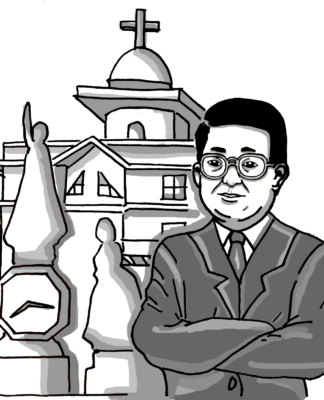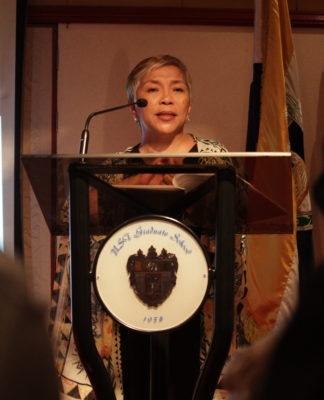UST IS now one step closer to fulfilling its dream of digitally preserving the Philippines’ rich plant biodiversity.
Grecebio Jonathan Alejandro, director for graduate research of the Graduate Studies, and his team is about to release an online database documenting various plant species found in the country this year.
The project, named the “DNA Barcoding for Authentication of Philippine Medicinal Plants,” is a four-year project that aims to create an online database and a medicinal guidebook for flora found in the Philippines with the help of DNA barcoding.
Along with Alejandro are project staffers Jason Chavez of the Far Eastern University, Axel Arolla of the University of the East, Rosario Rubite of the University of the Philippines-Manila and Danilo Gundan of the Philippine National Herbarium.
His research assistants are Vincent Cabelin, Hao Wei Hsu, Jay Edneil Olivar, and Propa Joy Santor.
Funded by the Philippine Council for Health Research and Development of the Department of Science and Technology, the project helped place the University as the Center for DNA Plant Barcoding in the Philippines.
Answer to adulteration
Alejandro recalled conceptualizing the four-year project last 2012 due to the country’s plant biodiversity. The project is expected to end next year with the release of an online database and an updated medicinal guidebook.
“We have a very rich folkloric culture, especially when it comes to herbal medicine,” he said. “Aside from prescription medicine, we also rely a lot on herbal plants.”
The World Health Organization said that 80 percent of people around the world rely on herbal medicine. However, the adulteration of medicinal plants pose threats to the health of recipients.
Adulteration is the substitution of effective medicinal plants to its similar-looking counterparts. Alejandro explained that just because two plants look alike does not mean their medicinal properties are the same.
“With the help of DNA barcoding, we can avoid health concerns like this,” he said. “A database and a guidebook could help experts and students alike not just with research but with their health as well.”
A genetic supermarket
DNA barcoding relies on identifying DNA markers or unique segments of a species’ DNA to separate them apart, like how a barcode differentiates products in supermarkets.
The process starts with the collection of medicinal plants from the Plant Resources of Southeast Asia and using molecular methods in order to amplify and identify its marker.
Alejandro clarified that DNA barcoding in plants is harder compared to animals because animals have a universal marker that contains their “barcode,” unlike plants that have five markers that each need to be tested.
“This is why we also want to find candidates for a ‘universal marker’ in plants throughout the research,” he said.
Alejandro described DNA barcoding as a diagnostic technique for species identification through their genotypes—an individual’s actual genetic makeup.
He added that DNA barcoding could pave the way for a more modern approach for species identification compared to traditional methods, such as the examination of a species’ morphological and molecular structure.
Nearing the finish line
Now on its third year, the barcoding project is projected to showcase its online database in October this year. Alejandro said that the database will have data from the past two years of their research to be merged with the data gathered this year for the expansion of the database and its regular update of contents.
In 2012, a total of 176 medicinal plants were barcoded, with 253 more added in 2013. Alejandro also said 131 endemic plants belonging to families like Begoniaceae, Annonaceae, and Rubiaceae, and to genera like Hedyotis, Praravinia and Uncaria are currently under observation as they could be potentially entered as new species in the database.
An updated medicinal guide book will also be released in 2016, which contains a more comprehensive list of plants with their various medicinal properties and possible health applications.
Although Alejandro is based in the University and is in charge of maintaining the database, the project belongs to the Department of Science and Technology. Aside from being named the Center of DNA Barcoding in the Philippines, UST will also be cited as one of the project’s main contributors in the upcoming online database. Maritz L. Lubo and Rhenn Anthony S. Taguiam

















